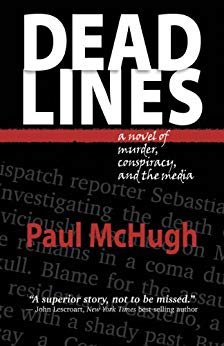SEAL stories originally ran in the San Francisco Chronicle in May, 2006.
Modern Navy SEAL commando missions range from clandestine reconnaissance to direct action combat raids, from “foreign internal defense” (training local forces) to protection of human resources, and even counter-drug operations.
Most of these jobs are highly classified. But a sense of who SEALs are and how teams do their work can be garnered from a Vietnam-era mission that’s been de-classified – so it could be described in a Congressional Medal of Honor citation.
It’s the sole known episode in American history where one Medal of Honor recipient rescued another.
Far behind enemy lines
October 31st, 1972. Two Navy SEAL officers, Tommy Norris and Mike Thornton, led a force that also included three South Vietnamese commandos on a mission to capture enemy soldiers in order to grill them for intelligence. They launched a small rubber boat from a Vietnamese Navy junk at night, and sailed toward an enemy base located near the Cua Viet River.
Norris, the senior officer, already had experience sneaking around the Vietnam outback. Just six months earlier, he had led a five-man patrol to rescue a downed Air Force navigator. Right after that, he disguised himself as a local fisherman, and went with a South Vietnamese commando, Nguyen Van Kiet, to paddle a sampan in the same area and bring out a downed forward air controller. He succeeded, though they were spotted by the enemy and came out under heavy fire. Norris called in an air strike and escaped under a screen of smoke and suppressing fire (four years later, he would receive his Medal of Honor for this mission).
On his October mission with Thornton, Norris upped the ante. He landed and went inland for five kilometers, making reconnaissance of enemy positions. By daybreak, they were back at their boat. Then, they were spotted. A burst of AK-47 fire summoned a unit of some 60 NVA regulars, and their small patrol was engulfed in a three hour-long firefight, that instantly became a desperate struggle for survival.
Norris radioed for a strike from U.S. Navy artillery to assist. Amidst the chaotic melee, the team separated. A Vietnamese commando came to Thornton’s position, and told him Norris had been killed. Whether he was alive or dead, Thornton wasn’t about to leave his teammate behind. He ran through enemy fire to the last spot he’d seen Norris. Norris had taken a round from an AK-47 to the skull, knocking an eye out and shattering his forehead.
Into a watery refuge
Thornton saw two enemy soldiers standing over Norris. He killed them both, and picked Norris up. As he ran with him back to the water, an artillery shell exploded nearby, hurling them both through the air. Now, besides having a bullet hole through his own calf, Thornton bore shrapnel wounds in his back. But he picked up Norris and ran again and finally reached the sea — a place of refuge and a venue of choice for a Navy SEAL.
He inflated Norris’ life vest. After attaching a wounded Vietnamese commando to the overall package so the man could keep Norris’ face out of the water, Thornton swam out to sea for three straight hours, towing them both. Finally, they were picked up by the junk that had dropped them off. The other two Vietnamese commandos escaped under their own power.
The power to rally
Norris then was hospitalized for six years, as he was slowly drawn back from the threshold of death. His face and skull were restored with metal plates and 29 reconstructive surgeries. Eventually, Norris returned to work for the United States as an FBI agent, serving 20 years in a variety of domestic and overseas postings.
But amid his long convalescence, Norris had enjoyed a brief escape with Thornton again. About a year into his recovery, Thornton slipped into the hospital and spirited Norris out — against doctors’ orders — so Norris could enjoy watching Thornton receive the Congressional Medal of Honor from President Nixon, for his, “extraordinary courage and perseverance.”
Don’t abandon a teammate
That citation did not mention it, but another admirable quality he could have been cited for was a high level of dedication to his teammate’s well-being, the epitome of the SEAL ideal. You never leave a buddy behind.
Photojournalist Lance Iversen now takes assignments in Reno, Lake Tahoe and the Sacramento Valley. Contact: liversen4901@gmail.com.








